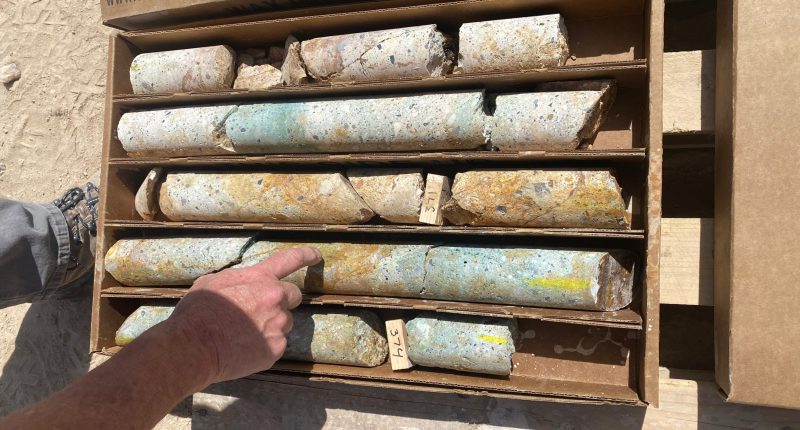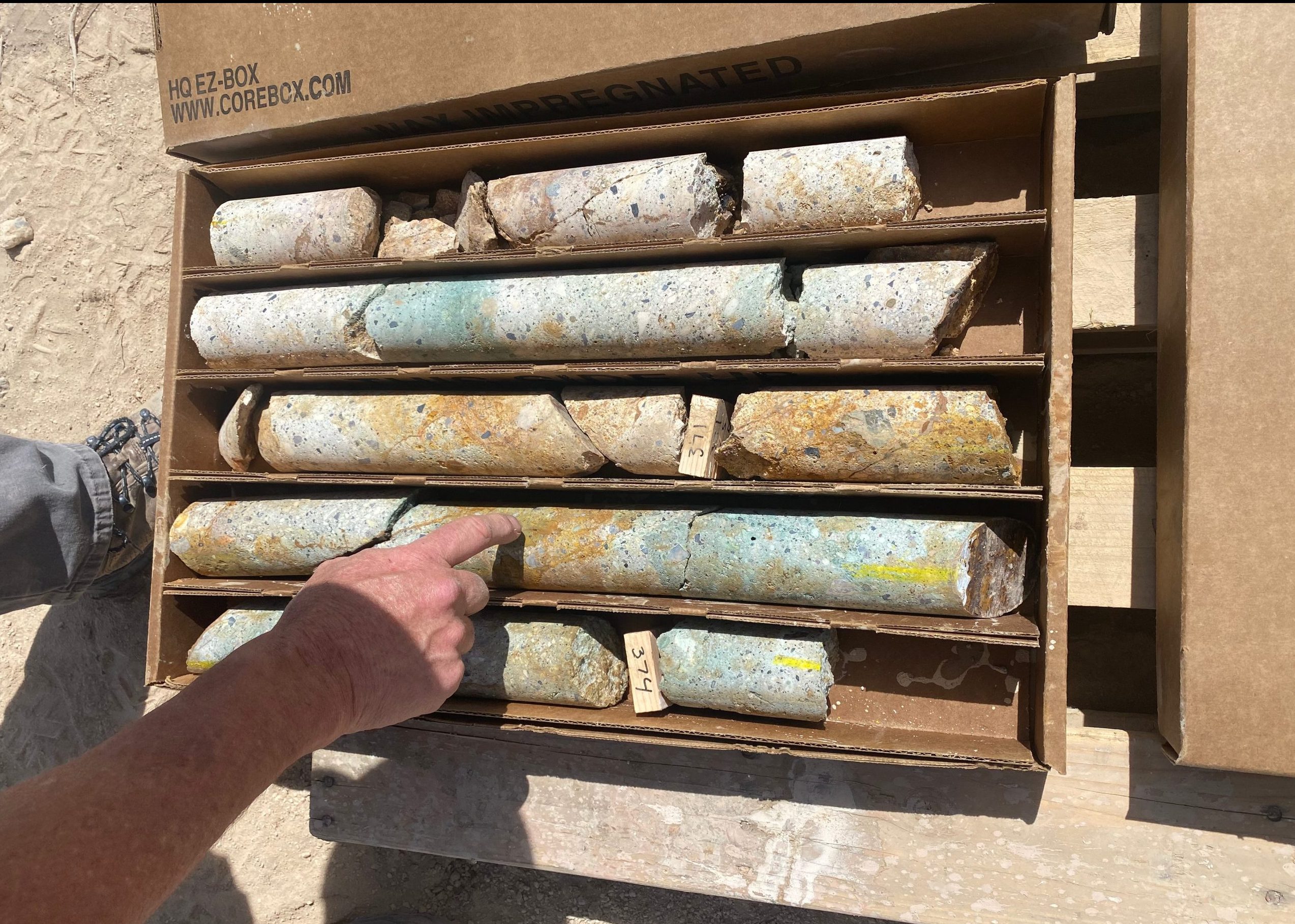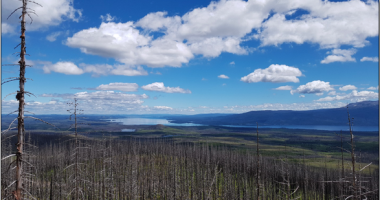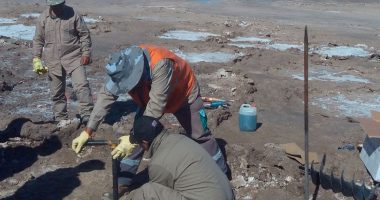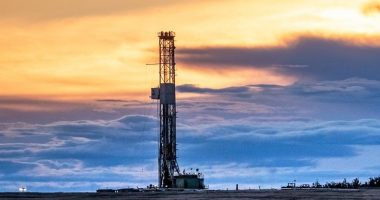While the stock market is efficient over the long term, proportionately matching value and share price, this is only because of active investors, and their ability to identify and take advantage of short-term over and undervaluation.
In the case of Viva Gold (TSXV:VAU), a microcap explorer developing its flagship Tonopah Gold Project in western Nevada, seven years of progressively prospective drilling, environmental studies and metallurgical test work have eluded the grasp of expert allocators, offering new investors a 60 per cent discount to the share price when Tonopah was acquired in March 2017.
Why Viva Gold stock is down
Despite consistent operational excellence, and record gold prices over US$2,000 per ounce, Viva has developed during a period of intense macroeconomic swings and ensuing investor uncertainty.
Weakening global growth in 2018 and 2019 signaled the end of the boom following the Great Financial Crisis, and with it investors’ appetite for higher-risk opportunities in microcap mining stocks. Dragged down by this dynamic – despite encouraging drilling, and a skyrocketing resource base from under 50,000 contained ounces in 2017 to 376,000 ounces in 2019 – Viva stock fell by more than 40 per cent from the Tonopah purchase to its pre-COVID high of C$0.26, compared to the TSX’s approximately 4 per cent gain over the period.
As COVID-19 brought the global economy to a halt, banning us into isolation and causing mounting cross-industry losses in productivity, Viva’s 27 per cent drop to C$0.19 per share tracked the TSX’s 33 per cent fall from February to March 2020, when the virus first hit the stock market, and investors once again ran en masse for the sidelines.
Towards the end of the year, once vaccination rates rose and businesses began to reopen, consumer enthusiasm to spend and rediscover the outside world began to outpace the economy’s ability to meet their needs, leading to widespread inflation, clogged supply chains and soaring wages. This dynamic sent the TSX on an 85 per cent climb from its COVID low to Q1 2022, when the Bank of Canada began interest rate hikes to cool down the by then overheating economy.
Viva should have kept pace with the index, given three main catalysts:
- Tonopah’s first preliminary economic assessment (PEA) in July 2020 (amended in April 2022), including:
- An after-tax net present value (5 per cent discount rate) of US$36.3 million with a 2.9-year payback
- Initial production of up to 50,000 ounces per year and all-in sustaining costs of US$1,074 per ounce
- A 25 per cent internal rate of return at US$1,400 per ounce, with gold surging to more than US$2,000 from summer 2020 to date as investors look to hedge against inflation and dollar devaluation
- Consistently strong drill results through November 2021
- A resource estimate increase to 600,000 contained ounces in 2022
Nevertheless, Viva stock proceeded to drop by another 31 per cent to C$0.13 per share, further incentivizing interested investors.
In the intervening two years, monetary policy has cut inflation by more than half from 2022 highs in the U.S. and Canada, leading to tamer labour markets, consumer price normalization and recessionary fears, with the total U.S. market adding about 15 per cent to date, and Viva (as well as the TSX) remaining relatively flat over the period, failing to reflect multiple value-added events, including:
- A 20 per cent investment from Dundee Corporation in 2022-2023, an established mining investor with an in-house due diligence team (we’ll discuss Viva’s other institutional backers later on)
- Gold recoveries of more than 91 per cent from high-grade composite and numerous high-grade gold zone discoveries in 2022
- The extension and confirmation of many of these zones, as well as new discoveries, in 2023
As we’ll now explore in detail, Viva stock’s descending trajectory rests on investors’ poor assessment of a long list of green flags and key milestones to date, each of which have substantiated the increasing probability for profitable gold extraction at Tonopah with each passing year.
A textbook example of upside potential
A victim of an unfortunate macroeconomic stretch, Viva stock has priced in next to none of Tonopah’s development, with overly cautious investors choosing capital preservation over conviction in the project’s consistently diminishing risk thanks to strategic drilling and metallurgy, systematic environmental study work, and a flight to safety in its commodity of choice.
The 10,250-acre project is about 30 kilometres northeast of Tonopah, Nevada, on the Walker Lane gold trend (slide 6), in one of the world’s premier mining jurisdictions, where it houses a low-sulfidation epithermal gold deposit in advanced development for an open-pit heap leach mine. Mineralization includes disseminated low-grade zones and high-grade veins and breccias up to a bonanza-grade 138 g/t gold.
The Tonopah project’s initial PEA (2020) proposes a high-grade starter pit containing 2.7 million tonnes at 1.4 g/t gold starting at just 10 metres below surface, supporting the first 2.5 years of a 6-year life-of-mine, while driving capital payback.
An updated PEA and resource estimate, expected in the second half of 2024 after upcoming drilling, is likely to further increase the grade and size of the currently 600,000-ounce gold resource, including the high-grade starter pit, as well as provide insights and facilitate capital raises for initial feasibility work in late 2024, eventually leading to a construction decision by late 2025.
The Tonopah project’s prospectivity is further enhanced by:
- Paved road and powerline access
- Being located in the only under-allocated hydrographic basin in Nevada, granting it excess water in one of the United States’ most water-starved states
- Kinross Gold’s nearby Round Mountain mine, which produced 226,374 gold equivalent ounces in 2022, and may represent a future opportunity to reduce capital requirements, given a potential need for mill feed as the mine ramps down in 2027
Drilling in 2024 intends to extend under-drilled gold zones discovered in 2022-2023, primarily in the eastern half of Tonopah’s Main Pit, with the goal of increasing measured and indicated mineralization, decreasing strip ratio and ultimately generating shareholder value through profitable operations.
“We’re not trying to rush a product out there,” James Hesketh, Viva Gold’s chief executive officer (CEO), said in a recent interview with Stockhouse. “Tonopah will have more credibility with the additional drilling, improving its ability to backstop future financing.” Contingent on the new PEA’s results, Hesketh believes the project has the potential to produce about 75,000 ounces of gold per year for about nine years, generating approximately US$150 million in annual revenue in today’s gold price environment.
Value-added metallurgical testing
Another way Viva has added value amidst continually significant drilling results is through metallurgical testing. The company has demonstrated more than 91 per cent gold recoveries from high-grade (over 1 g/t gold) composite through pulp agglomeration/heap leach testing, which is about 20 per cent above conventional heap leaching’s average of 70 per cent. The 91 per cent figure applies to 20 per cent of the resource tonnes, which contain 50 per cent of Tonopah’s declared ounces.
Management believes the revenue gains from metallurgical enhancement could significantly offset the capital and operating costs associated with it, bolstering the project’s overall economics.
Comprehensive permitting studies
While metallurgical work and strategic drilling have advanced the Tonopah resource to the beginning of feasibility, supported by an exploration permit for up to 75 acres of cumulative disturbance, the company has concurrently chipped away at the environmental studies required to build a mine.
This process began in March 2021, when Viva consulted with the State of Nevada and the Bureau of Land Management for a baseline needs assessment, which details 36 studies required for permitting consideration. The company was able to fulfill approximately 50 per cent of the requirements during the consultation, and has been consistently checking boxes ever since, including completed wildlife studies, three years of water testing, 86 weeks of geochemical studies, and ongoing community outreach, hydrologic modeling, and upgrading (50 per cent complete) of previous operator Newmont Gold’s 2003 archeologic and cultural resource studies.
“We go the extra mile to do the work required to backstop what we’re talking about,” Hesketh said. “That’s really what Viva Gold is all about. We are dedicated to creating a project that can be built and we believe Tonopah holds all the requisite elements.”
He estimates that baseline study work is between 85-90 per cent complete, which will enable the submission of a plan of operations to initiate the permitting process after finalizing Tonopah’s feasibility study and mine design.
No-nonsense management
Tonopah’s robust engineering and geological work is backed by Viva’s capable management team, whose philosophy, according to Hesketh, is to develop projects as if they were to be built in house. The clearest evidence of this, besides Viva’s rigorous due diligence work, is how every one of its employees works on a contract basis, allowing for minimal, scalable overhead costs.
Hesketh is a mining engineer and mineral economist with over 40 years of experience, including 15 years as a public company CEO. He has taken eight mines into operation over the course of his career, spanning industrial minerals, copper and gold. His most recent success, Atna Resources, saw him ramp up a six-person exploration team into two operating mines generating US$100 million in annual revenue in just six years.
His established leadership is complemented by:
- Chairman Christopher E. Herald, who is president, CEO and director of Solitario Zinc, and previously served in senior management roles at Crown Resources from 1990 until Kinross Gold acquired it in 2006
- Chief financial officer Steven Krause, CPA, who brings extensive experience with mining, mineral exploration and development-stage companies in Canada and the United States. Krause currently serves as CFO of Bear Creek Mining and president of Avisar Chartered Accountants
- A decorated set of directors, including David Whittle, who has more than 25 years of senior executive experience across multiple development-stage and operational mining projects, open-pit and underground; Edward Mahoney, who previously served as chief geologist at Kinross’ Round Mountain Mine, as well as for Barrick Gold‘s North American portfolio; and Andrew Bolland, a senior mining executive who occupied technical positions of rising tenure during a distinguished career at Barrick Gold
Looking back on the holistic investment opportunity we have just described – from consistent resource expansion, to profit-enhancing metallurgical work, to executing a duty of care over the land – it’s no surprise Viva Gold has attracted the interest of seasoned mining allocators, to the tune of 57 per cent of outstanding shares, who are prepared to hold on through broader economic hurdles and retail investor fickleness.
Strong institutional backing
Besides Dundee Corporation’s 20 per cent stake, three other institutions have vetted the Tonopah project with a long-term investment, financing support, and an interest in maintaining pro rata ownership.
The first, RAB Capital, is a fundamentals-based investor in private and listed small-cap companies, as well as real estate development opportunities, that has accumulated a 17.8 per cent position in Viva since 2021.
The second, Pointillist (9.6 per cent) is a privately offered pooled investment vehicle overseen by Herr Investment Group, a high-net-worth bespoke asset manager focused on in-depth research and continual refinement based on market conditions.
The third, Myrmikan Capital (9.5 per cent), is strongly bullish on gold as recessionary conditions deepen and rising U.S. government spending continues to devalue the dollar.
What the market is missing
As an individual investor, it should be clear by now that Viva Gold represents a tangible opportunity for outsized long-term returns with no market recognition. This is the only logical conclusion for a company that, as per its most recent investor presentation, has delivered on its belief that “shareholder value is generated by adding gold ounces and de-risking gold projects for ultimate mine development.”
The present moment – before a feasibility study estimates a return on investment and attracts the retail herd – is also the perfect time for investors to get in early, as management continues to add to Tonopah’s consistent developmental track record, realizes the project’s substantial exploration upside based on new zones discovered during 2023 drilling, and positions investors to benefit from a share price re-rating through an operating mine or asset sale.
While Hesketh believes in Tonopah’s potential to reach a 1-million-ounce deposit, he tempers his optimism with a realistic assessment of current market conditions.
“The gold price has moved up, while both junior equities and majors have not,” he pointed out. “What we’re hoping for is that the continued positive gold market will serve as a tide that lifts all ships, leading to greater liquidity and an enhanced ability to move forward with carefully considered work at Tonopah.”
Despite ample evidence of a budding resource, and proven leadership committed to dotting all their i’s and crossing all their t’s to bring it to reality, it will still take a seasoned investor, hardened by volatility, to look past Viva’s prolonged underperformance and hold on, knowing full well the company has done everything right since the Tonopah acquisition. When it comes to junior miners, this is as good and as easy as it gets.
Join the discussion: Find out what everybody’s saying about this microcap gold stock on the Viva Gold Bullboard.
This is sponsored content issued on behalf of Viva Gold, please see full disclaimer here.
